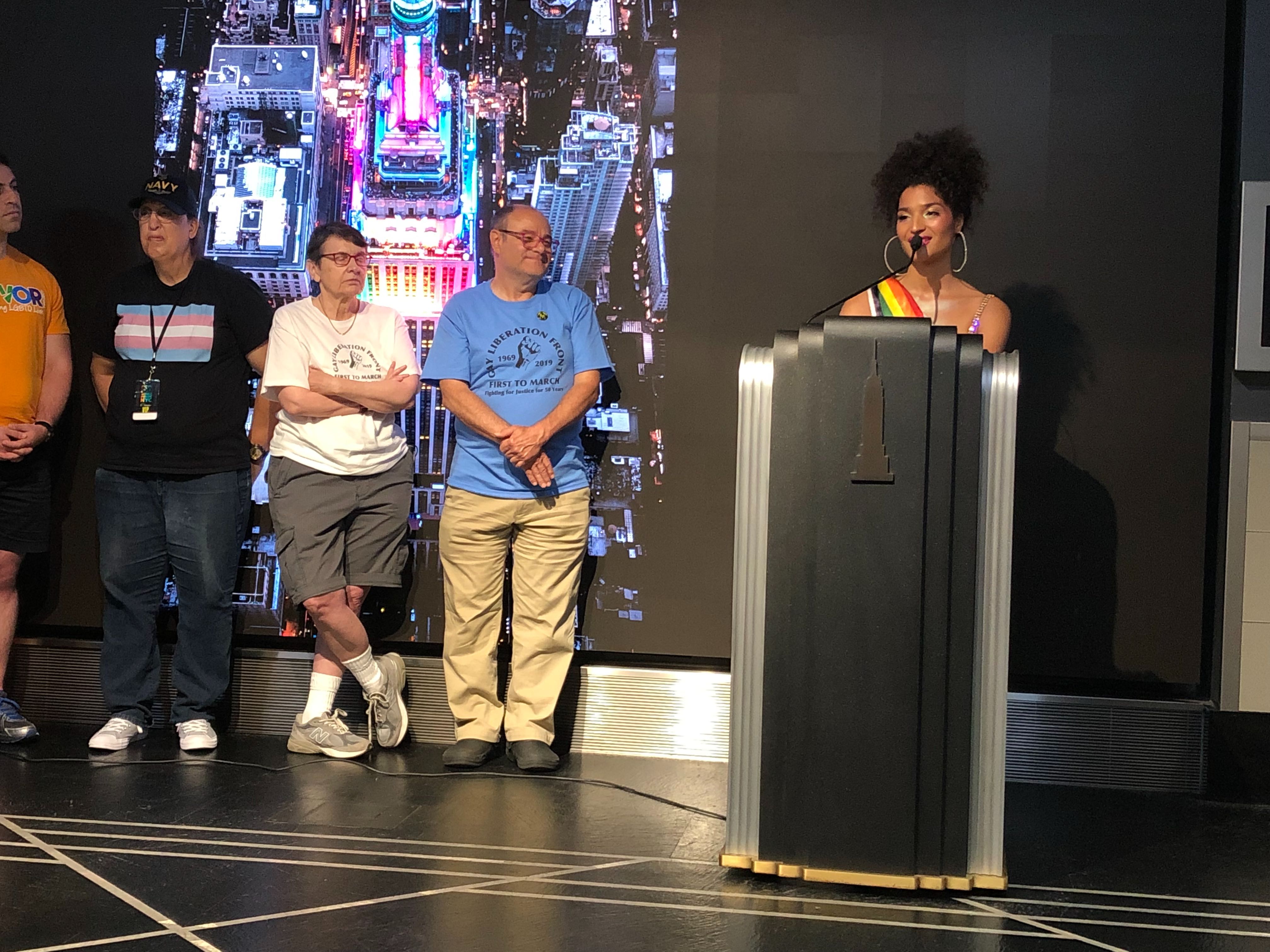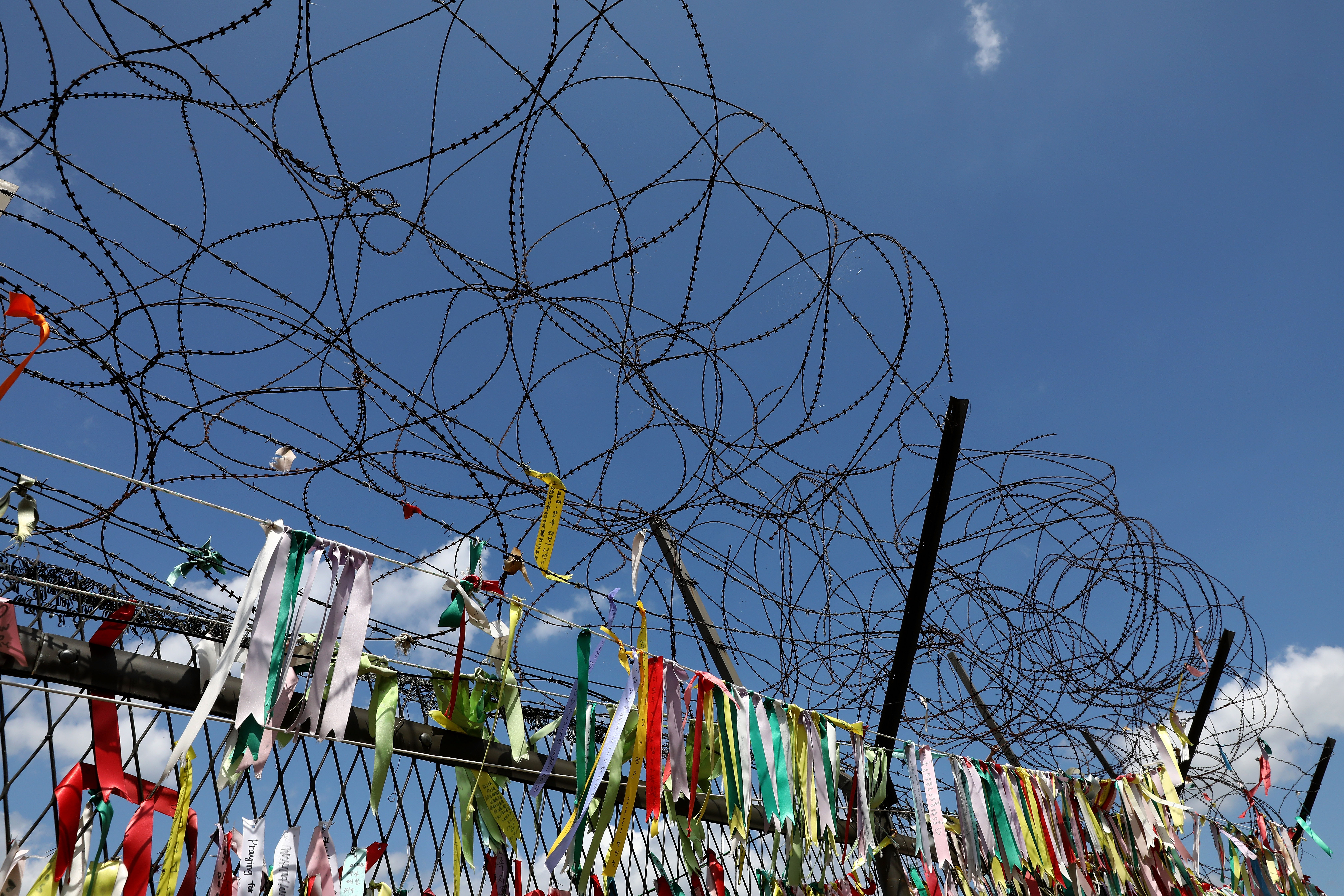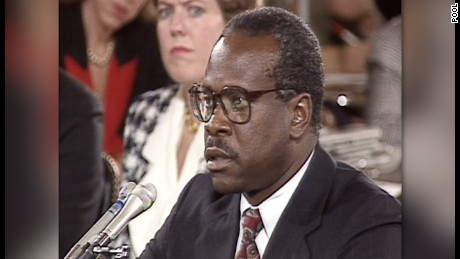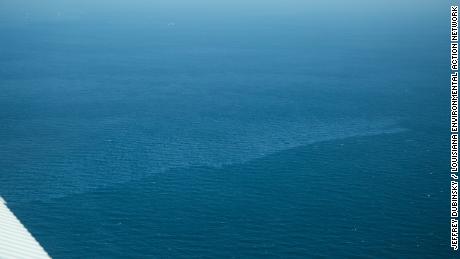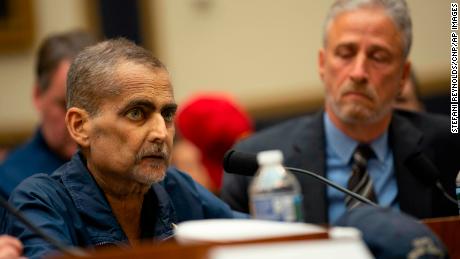I’ve heard that line from so many black friends and relatives over the years that it’s become sort of a running joke.
A white governor
accused of wearing blackface in a yearbook.
We forgive.
A white supremacist
murders nine black worshippers in a church.
We forgive.
Countless big-name pastors caught with their hands in the collection plate or on a parishioner.
We forgive.
But when I watched Sen. Kamala Harris’ exquisite takedown of Joe Biden this week over his past
opposition to busing, an odd thought occurred to me: Maybe we are getting tired of being such a “forgiving people,” and that might not be so bad.
Most commentators portray Harris’ exchange with Biden during the second night of the Democratic debate as a potential game-changer for the Democratic presidential nomination. But Harris dropped a bomb on Biden that’s bigger than politics. She exposed a psychological shift in some parts of the black community that’s been building for years.
The old days of black people putting up with questionable leaders because they felt like they had no other choice may be over. No more talk about trying to understand white people’s racism, forgetting the impact of slavery, moving on from the past because “this is a time of healing.”
Forgiveness may not always be divine; sometimes it leads to something worse.
“Look at what forgiveness has gotten us. It gave us Trump,” said
Wes Jackson, a commentator who said he cheered when he saw Harris confront Biden during the debate.
Biden not only misread the room, he misread the time.
There are two reasons why Harris’ attack on Biden left such a deep bruise.
Forgiveness fatigue
When a
white supremacist killed nine worshippers in 2015 during a church service in Charleston, South Carolina, many news accounts focused on a familiar storyline: the decision by some of the survivors to forgive the murderer.
‘);$vidEndSlate.removeClass(‘video__end-slate–inactive’).addClass(‘video__end-slate–active’);}};CNN.autoPlayVideoExist = (CNN.autoPlayVideoExist === true) ? true : false;var configObj = {thumb: ‘none’,video: ‘tv/2015/06/19/charleston-shooting-dylann-roof-hearing-relatives-bts-nr.cnn’,width: ‘100%’,height: ‘100%’,section: ‘domestic’,profile: ‘expansion’,network: ‘cnn’,markupId: ‘body-text_18’,theoplayer: {allowNativeFullscreen: true},adsection: ‘const-article-inpage’,frameWidth: ‘100%’,frameHeight: ‘100%’,posterImageOverride: {“mini”:{“width”:220,”type”:”jpg”,”uri”:”//cdn.cnn.com/cnnnext/dam/assets/150619144016-charleston-church-shooting-dylann-roof-bond-hearing-nr-00011622-small-169.jpg”,”height”:124},”xsmall”:{“width”:307,”type”:”jpg”,”uri”:”//cdn.cnn.com/cnnnext/dam/assets/150619144016-charleston-church-shooting-dylann-roof-bond-hearing-nr-00011622-medium-plus-169.jpg”,”height”:173},”small”:{“width”:460,”type”:”jpg”,”uri”:”//cdn.cnn.com/cnnnext/dam/assets/150619144016-charleston-church-shooting-dylann-roof-bond-hearing-nr-00011622-large-169.jpg”,”height”:259},”medium”:{“width”:780,”type”:”jpg”,”uri”:”//cdn.cnn.com/cnnnext/dam/assets/150619144016-charleston-church-shooting-dylann-roof-bond-hearing-nr-00011622-exlarge-169.jpg”,”height”:438},”large”:{“width”:1100,”type”:”jpg”,”uri”:”//cdn.cnn.com/cnnnext/dam/assets/150619144016-charleston-church-shooting-dylann-roof-bond-hearing-nr-00011622-super-169.jpg”,”height”:619},”full16x9″:{“width”:1600,”type”:”jpg”,”uri”:”//cdn.cnn.com/cnnnext/dam/assets/150619144016-charleston-church-shooting-dylann-roof-bond-hearing-nr-00011622-full-169.jpg”,”height”:900},”mini1x1″:{“width”:120,”type”:”jpg”,”uri”:”//cdn.cnn.com/cnnnext/dam/assets/150619144016-charleston-church-shooting-dylann-roof-bond-hearing-nr-00011622-small-11.jpg”,”height”:120}}},autoStartVideo = false,isVideoReplayClicked = false,callbackObj,containerEl,currentVideoCollection = [],currentVideoCollectionId = ”,isLivePlayer = false,mediaMetadataCallbacks,mobilePinnedView = null,moveToNextTimeout,mutePlayerEnabled = false,nextVideoId = ”,nextVideoUrl = ”,turnOnFlashMessaging = false,videoPinner,videoEndSlateImpl;if (CNN.autoPlayVideoExist === false) {autoStartVideo = false;if (autoStartVideo === true) {if (turnOnFlashMessaging === true) {autoStartVideo = false;containerEl = jQuery(document.getElementById(configObj.markupId));CNN.VideoPlayer.showFlashSlate(containerEl);} else {CNN.autoPlayVideoExist = true;}}}configObj.autostart = CNN.Features.enableAutoplayBlock ? false : autoStartVideo;CNN.VideoPlayer.setPlayerProperties(configObj.markupId, autoStartVideo, isLivePlayer, isVideoReplayClicked, mutePlayerEnabled);CNN.VideoPlayer.setFirstVideoInCollection(currentVideoCollection, configObj.markupId);videoEndSlateImpl = new CNN.VideoEndSlate(‘body-text_18’);function findNextVideo(currentVideoId) {var i,vidObj;if (currentVideoId && jQuery.isArray(currentVideoCollection) && currentVideoCollection.length > 0) {for (i = 0; i 0) {videoEndSlateImpl.showEndSlateForContainer();if (mobilePinnedView) {mobilePinnedView.disable();}}}}callbackObj = {onPlayerReady: function (containerId) {var playerInstance,containerClassId = ‘#’ + containerId;CNN.VideoPlayer.handleInitialExpandableVideoState(containerId);CNN.VideoPlayer.handleAdOnCVPVisibilityChange(containerId, CNN.pageVis.isDocumentVisible());if (CNN.Features.enableMobileWebFloatingPlayer &&Modernizr &&(Modernizr.phone || Modernizr.mobile || Modernizr.tablet) &&CNN.VideoPlayer.getLibraryName(containerId) === ‘fave’ &&jQuery(containerClassId).parents(‘.js-pg-rail-tall__head’).length > 0 &&CNN.contentModel.pageType === ‘article’) {playerInstance = FAVE.player.getInstance(containerId);mobilePinnedView = new CNN.MobilePinnedView({element: jQuery(containerClassId),enabled: false,transition: CNN.MobileWebFloatingPlayer.transition,onPin: function () {playerInstance.hideUI();},onUnpin: function () {playerInstance.showUI();},onPlayerClick: function () {if (mobilePinnedView) {playerInstance.enterFullscreen();playerInstance.showUI();}},onDismiss: function() {CNN.Videx.mobile.pinnedPlayer.disable();playerInstance.pause();}});/* Storing pinned view on CNN.Videx.mobile.pinnedPlayer So that all players can see the single pinned player */CNN.Videx = CNN.Videx || {};CNN.Videx.mobile = CNN.Videx.mobile || {};CNN.Videx.mobile.pinnedPlayer = mobilePinnedView;}if (Modernizr && !Modernizr.phone && !Modernizr.mobile && !Modernizr.tablet) {if (jQuery(containerClassId).parents(‘.js-pg-rail-tall__head’).length) {videoPinner = new CNN.VideoPinner(containerClassId);videoPinner.init();} else {CNN.VideoPlayer.hideThumbnail(containerId);}}},onContentEntryLoad: function(containerId, playerId, contentid, isQueue) {CNN.VideoPlayer.showSpinner(containerId);},onContentPause: function (containerId, playerId, videoId, paused) {if (mobilePinnedView) {CNN.VideoPlayer.handleMobilePinnedPlayerStates(containerId, paused);}},onContentMetadata: function (containerId, playerId, metadata, contentId, duration, width, height) {var endSlateLen = jQuery(document.getElementById(containerId)).parent().find(‘.js-video__end-slate’).eq(0).length;CNN.VideoSourceUtils.updateSource(containerId, metadata);if (endSlateLen > 0) {videoEndSlateImpl.fetchAndShowRecommendedVideos(metadata);}},onAdPlay: function (containerId, cvpId, token, mode, id, duration, blockId, adType) {/* Dismissing the pinnedPlayer if another video players plays an Ad */CNN.VideoPlayer.dismissMobilePinnedPlayer(containerId);clearTimeout(moveToNextTimeout);CNN.VideoPlayer.hideSpinner(containerId);if (Modernizr && !Modernizr.phone && !Modernizr.mobile && !Modernizr.tablet) {if (typeof videoPinner !== ‘undefined’ && videoPinner !== null) {videoPinner.setIsPlaying(true);videoPinner.animateDown();}}},onAdPause: function (containerId, playerId, token, mode, id, duration, blockId, adType, instance, isAdPause) {if (mobilePinnedView) {CNN.VideoPlayer.handleMobilePinnedPlayerStates(containerId, isAdPause);}},onTrackingFullscreen: function (containerId, PlayerId, dataObj) {CNN.VideoPlayer.handleFullscreenChange(containerId, dataObj);if (mobilePinnedView &&typeof dataObj === ‘object’ &&FAVE.Utils.os === ‘iOS’ && !dataObj.fullscreen) {jQuery(document).scrollTop(mobilePinnedView.getScrollPosition());playerInstance.hideUI();}},onContentPlay: function (containerId, cvpId, event) {var playerInstance,prevVideoId;if (CNN.companion && typeof CNN.companion.updateCompanionLayout === ‘function’) {CNN.companion.updateCompanionLayout(‘restoreEpicAds’);}clearTimeout(moveToNextTimeout);CNN.VideoPlayer.hideSpinner(containerId);if (Modernizr && !Modernizr.phone && !Modernizr.mobile && !Modernizr.tablet) {if (typeof videoPinner !== ‘undefined’ && videoPinner !== null) {videoPinner.setIsPlaying(true);videoPinner.animateDown();}}},onContentReplayRequest: function (containerId, cvpId, contentId) {if (Modernizr && !Modernizr.phone && !Modernizr.mobile && !Modernizr.tablet) {if (typeof videoPinner !== ‘undefined’ && videoPinner !== null) {videoPinner.setIsPlaying(true);var $endSlate = jQuery(document.getElementById(containerId)).parent().find(‘.js-video__end-slate’).eq(0);if ($endSlate.length > 0) {$endSlate.removeClass(‘video__end-slate–active’).addClass(‘video__end-slate–inactive’);}}}},onContentBegin: function (containerId, cvpId, contentId) {if (mobilePinnedView) {mobilePinnedView.enable();}/* Dismissing the pinnedPlayer if another video players plays a video. */CNN.VideoPlayer.dismissMobilePinnedPlayer(containerId);CNN.VideoPlayer.mutePlayer(containerId);if (CNN.companion && typeof CNN.companion.updateCompanionLayout === ‘function’) {CNN.companion.updateCompanionLayout(‘removeEpicAds’);}CNN.VideoPlayer.hideSpinner(containerId);clearTimeout(moveToNextTimeout);CNN.VideoSourceUtils.clearSource(containerId);jQuery(document).triggerVideoContentStarted();},onContentComplete: function (containerId, cvpId, contentId) {if (CNN.companion && typeof CNN.companion.updateCompanionLayout === ‘function’) {CNN.companion.updateCompanionLayout(‘restoreFreewheel’);}navigateToNextVideo(contentId, containerId);},onContentEnd: function (containerId, cvpId, contentId) {if (Modernizr && !Modernizr.phone && !Modernizr.mobile && !Modernizr.tablet) {if (typeof videoPinner !== ‘undefined’ && videoPinner !== null) {videoPinner.setIsPlaying(false);}}},onCVPVisibilityChange: function (containerId, cvpId, visible) {CNN.VideoPlayer.handleAdOnCVPVisibilityChange(containerId, visible);}};if (typeof configObj.context !== ‘string’ || configObj.context.length 0) {configObj.adsection = window.ssid;}CNN.autoPlayVideoExist = (CNN.autoPlayVideoExist === true) ? true : false;CNN.VideoPlayer.getLibrary(configObj, callbackObj, isLivePlayer);});CNN.INJECTOR.scriptComplete(‘videodemanddust’);
It’s not hard to understand why they made that choice. Forgiving one’s enemy is a core teaching in Christianity. It’s also pragmatic. Forgive so you won’t be consumed by hatred. That belief formed the spiritual backbone of the civil rights movement.
I can recall one moment during a church meeting when a white man from South Africa told black members of my church that they could never get ahead in politics unless they seek to understand the racism of white people. One black woman interrupted him and said, “Why do we always have to be the people who have to understand?”
But there’s been a shift in thinking since the Charleston shooting.
I call it forgiveness fatigue.
In an
article titled, “Why is Forgiveness Always Expected from the Black Community After Violence Occurs,” the activist Jenn M. Jackson cited the litany of articles cataloging the survivors of the church shooting forgiving the shooter even though he “never exhibited a hint of regret.”
In another article titled, “6 Things Black People Need to Stop Saying to White People in 2018,” Shannon M. Houston
wrote:
“Forgiving whites is so 2017 (and literally every year before that). We’re going to try a new approach in 2018 called, ‘We don’t have time to forgive you because we’re busy doing our work and dreaming up a Blackness of the future that is too preoccupied with itself to worry about how white people will sleep at night without our forgiveness.'”
And then there was the anger that surged during President Barack Obama’s presidency.
Blacks saw the nation’s black president treated with such scorn and disrespect that many were inwardly relieved to see him
end his term — alive. Add to that the mounting anger over the random 911 calls on black people going about their lives in public places. It’s no surprise that there’s now a serious debate about reparations for slavery. Many blacks are no longer in the mood to forgive or forget after years of being urged by their pastors to
“love white folks because they know not what they did.”
Harris may have sprung a trap on Biden during the debate, but the trap was actually set years earlier when he was the vice president with the nation’s first black president. He didn’t see it then, and he didn’t see it this week.
Busing is a still raw issue for many black people
One of the most electric moments in Harris’ exchange with Biden came when she invoked her own experience being bused. She began by saying she did not think Biden was a racist, but citing his opposition to busing, she added:
“There was a little girl in California who was a part of the second class to integrate her public schools and she was bused to school every day,” Harris said. “And that little girl was me.”
And that little girl was also joined by countless brown and black kids who were bused to white schools during one of the overlooked periods in US history — the busing wars that followed the classic civil rights movement.
Glance in any history book and you’ll see countless discussions of “I Have a Dream” and the end of Jim Crow. But you won’t find many public schools teaching lessons about what happened during the second stage of the classic civil rights movement — the attempt to actually integrate the nation’s public schools.
Millions of black and brown kids were bused to predominantly white schools in cities outside the South during the ’60s, ’70s and ’80s, but it failed for largely one reason: Whites outside the South were often just as racist as the those in the Jim Crow South.
Busing provoked savage resistance from many white parents across the nation. And eventually the Supreme Court issued a series of decisions in the decades after the ’60s that halted the movement to integrate the nation’s schools.
Matthew Delmont, author of “Why Busing Failed: Race, Media and the National Resistance to School Desegregation,” said many white parents outside the South didn’t want their kids to share classrooms with black and brown kids.
Their schools had better teachers, resources and smaller classrooms than the typical black public school, and they wanted to keep it that way.
“White people didn’t support the civil rights movement if that meant that they had to give up anything — that’s the story of the North,” said Delmont, a professor of history at Dartmouth College in New Hampshire.
The school systems in the North were just as invested in maintaining the benefits of all-white schools as those in the South, Delmont said.
“It had a different name and accent than it did in the South, but it had the same purpose,” he said.
Yet at the same time, there are countless black and brown adults middle-aged and older like Harris who remember busing as a formative experience. They can remember getting up as early as dawn to get bused three hours to white schools across town.
It was transformative in many cases. What these adults also remember is getting a level of instruction and resources that they now know they would have never gotten in an all-black public school.
Some even made lifelong friends with people of other races who they never would have otherwise met.
“There were bumps in the road, but it was largely a positive experience for them,” Delmont said of those black and brown students who were bused.
And many black parents know their children would have never gotten a better education if not for the two words — federal intervention.
It was through a combination of court-ordered desegregation orders and armed troops that black kids were sent to predominately white schools. That’s how fierce white resistance was to black and brown kids in white schools.
Biden is still critical of what he calls “forced busing.” His campaign released a statement after his debate exchange with Harris, which said:
“Joe Biden has always supported voluntary busing and federally mandating busing to end de jure segregation. He has also always been an advocate for integration, but saw that forced busing was not the right mechanism for achieving it in Delaware because it put an undue burden on African-American families and children.”
School integration, though, would have never happened if it had been strictly left up to white parents and white school districts, said Ravi Perry, incoming chair of the political science department at Howard University in Washington.
Perry said busing was a “core issue central to the black experience.” He cited the famous story of the “Little Rock Nine.” It took the mobilization of the National Guard to ensure that the black students would be enrolled in the previously all-white school.
“If the federal government did not intervene, where we would be? That was federal intervention,” Perry said.
Bigger than politics
Black people now expect more not only from white leaders; they demand more from prominent figures in the black community as well.
One of the revelations that came from the Jussie Smollett case earlier this year is that the black community will not rally around embattled black celebrities just because they holler racism.
Smollett, the former “Empire” actor, said he was the victim of a white hate crime. He was accused later of staging the hate crime and filing a false police report. Black politicians such as
Harris and
Sen. Cory Booker initially expressed public sympathy for Smollett, but
distanced themselves from the actor as
questions grew about his story. All charges against Smollett were
later dropped.
But unlike O.J. Simpson in an earlier era, Smollett was never able to rally the community behind him because blacks are becoming more savvy about the difference between “authentic blackness” and “strategic blackness,” Tanya Hernandez, a professor at Fordham University’s School of Law in New York, told me during an earlier talk about Smollett.
“The contemporary Trump world means we don’t have the luxury to be uncritical about who gets our communal love and support,” said Hernandez, author of “Multiracials and Civil Rights: Mixed-Race Stories of Discrimination.”
Hernandez said the black community and its allies cannot continue “to carry brothers who act in ways that call into question the existence of real violence and bias.”
Perry points to another racial controversy involving Biden that shows this change. In 1991, Biden was the chairman of the Senate Judiciary Committee when it held confirmation hearings for then-Supreme Court nominee Clarence Thomas. When law professor Anita Hill accused Thomas of sexual harassment, Biden
was accused of ignoring her claims and easing Thomas’ path to the high court.
Many black people questioned Thomas’ conservative beliefs, but it was muted.The NAACP did not mount a vigorous opposition to him. It opposed his nomination
“with regret” after much internal debate. Some black women who came out against Thomas’ nomination were actually scorned by others in the black community.
Would that happen today?
“Absolutely not,” Perry said. “Young black people today wouldn’t support a Democratic president or Republican president just because they’re black.”
In an earlier era, black voters often felt like they had little choice but to put up with white male politicians like Biden.They could appear tone-deaf or even racist at times, but many black voters felt as though they had no options
Not anymore. Consider the optics of the Democratic debate stage. They were almost as damaging to Biden as Harris’ words.
On the stage were men of color and women. It graphically showed black voters that they now have choices, said Jackson, the commentator, who is also the founder and executive director of the Brooklyn Hip-Hop Festival.
“I think people are starting to understand we have to step letting these white males off the hook,” Jackson says. “You look up there now and you got Kamala, you got Elizabeth Warren. You got Castro.”
And you have a new reality. The days may be over when a white or black leader could get black support by saying the past is the past, I’ve evolved and this should be a time of healing.
The Harris-Biden moment suggests that moment has come.
If Biden didn’t know these new rules, he knows it now. And so should others.

